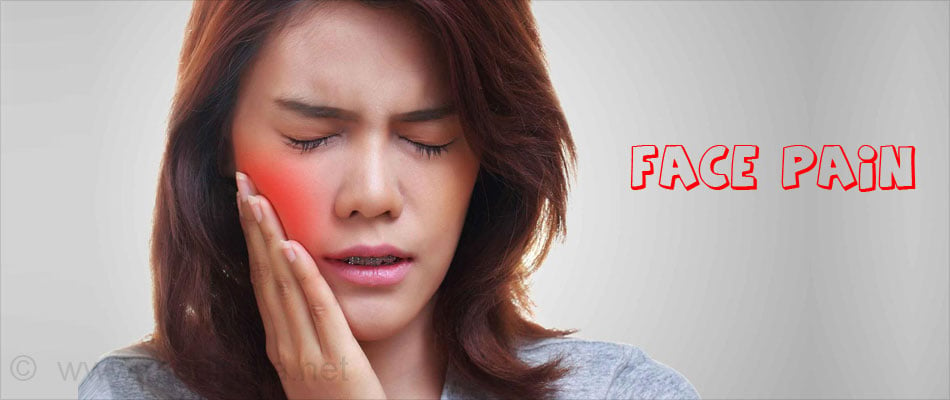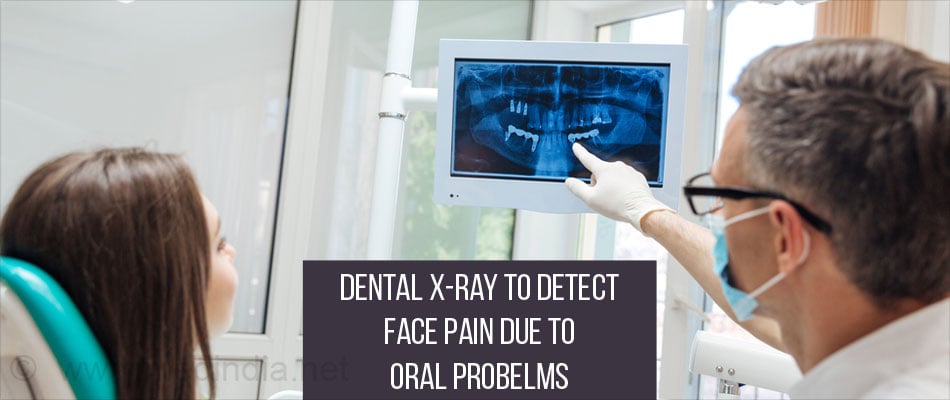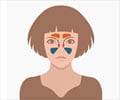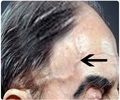- Face pain - (https://medlineplus.gov/ency/article/003027.htm)
- Trigeminal neuralgia - (http://www.mayoclinic.org/diseases-conditions/trigeminal-neuralgia/basics/definition/con-20043802?p=1)
- TMJ Disorders - (http://www.nidcr.nih.gov/oralhealth/topics/tmj/tmjdisorders.htm)
What is Face Pain?
Face pain is an intense or dull and throbbing or stabbing pain in the face. It can be present in any part of the face like eyes, mouth or forehead.

What are the Causes of Face Pain?
Face pain may occur due to infection, injury or a neurological cause. The following are some of the causes which result in a face pain.
Dental Causes
Dental problems cause oral pain. The pain can be aching, throbbing, dull or sharp in nature. Dental pain is often associated with eating and drinking. It is sometimes difficult to locate the tooth causing the pain. Maintaining dental hygiene is essential to prevent the dental problems.
Sinusitis
Infection of the paranasal sinuses can cause a headache. The paranasal sinuses are hollows in the face bones that open up into the nose. Sinusitis also causes tooth pain, nasal discharge, post-nasal drip, cough and fever. The area over the affected sinus is tender in patients with sinusitis. Antibiotics, decongestants, anti-histamines and sometimes surgery are the treatment options for sinusitis.
Trigeminal Neuralgia (Tic Douloureux)
The trigeminal nerve carries sensations from the face to the brain. Trigeminal neuralgia is a chronic pain disorder due to the involvement of the trigeminal nerve. It is more common among women above 50 years of age. The symptoms manifest in different patterns. The pain is episodic or constant, mostly involving one side of the face. It could be aching, shock-like or burning and is triggered by activities like eating, touching the face, brushing teeth, and shaving. Medical management includes anticonvulsants, antispasmodics and botox injection. Surgical management includes microvascular decompression, gamma knife radiosurgery, glycerol injection, balloon compression and radiofrequency thermal lesioning.

Temporomandibular Disorders (TMD)
The temporomandibular joint (TMJ) is the joint of the jaw, just in front of the ear. Temporomandibular joint disorders result in a constant dull aching pain or an intermittent sharp pain in front of the ear. The pain is worse on chewing and can spread till the temple, behind the ear and into the neck. It may arise due to muscle pain, displacement of the disc within the joint or arthritis of the joint. TMJ disorders are more common in women and in people with a habit of clenching and grinding of the jaw and teeth.
Atypical Odontalgia
Atypical odontalgia is a condition where the patient suffers from tooth pain in the area of an apparently normal tooth or at an extraction site. The pain is constant and dull throbbing, aching or burning type. It is more among women in their mid-40s. Treatment with antidepressants is helpful in some patients.
Post-Herpetic Neuralgia
Post-herpetic neuralgia is seen in patients afters the attack of shingles. Shingles is a condition caused by the chickenpox virus which often affects nerves of the forehead and near the eyes. The pain is throbbing, aching or burning type and the skin is extremely sensitive to touch. A previous history of shingles may be obtained from the patient. The pain is treated with low dose tricyclic antidepressants and anticonvulsants.
Cluster Headache
Cluster headache is a throbbing or boring pain that affects one side of the head behind the eye and around it. It is triggered by consuming alcohol and increases on lying down. A cluster of throbbing attacks which last for 15 min utes to 3 hours occurs many times in a day or every few days. The patients may also have symptoms of watering of eyes, forehead sweating, nasal stuffiness and flushing of the face. Medications like sumatriptan, ergotamine, calcium channel blockers, steroids and lidocaine are used to treat and prevent the attacks.

Facial Migraine
Facial migraine is characterized by pulsating and throbbing pain in the lower face especially at the nostrils, cheeks, gums and teeth. The patients with facial migraine attacks are sensitive to the light and sound. Sumatriptan and similar medications are used to treat a facial migraine.
Chronic Paroxysmal Hemicrania
Chronic paroxysmal hemicranias, also called Sjaastad syndrome, is similar to a cluster headache but the pain lasts for a shorter duration and occurs frequently. It affects the same side of the head each time. Indomethacin is used to treat the condition.
Occipital Neuralgia
Occipital neuralgia causes pain on the back of the head and spreads to the ears and the top of the head on one side. It is caused by an injury or compression of the occipital nerve due to conditions like arthritis or tumor. The pain due to occipital neuralgia is throbbing and prolonged. It can be managed with a local anesthetic, anticonvulsant or antidepressant. Treating the cause is essential.
Persistent Idiopathic Facial Pain (PIFP)
Persistent idiopathic facial pain is an aching or sharp pain that is present almost every day but does not fit into the definition of any of the neuralgias. Anti-depressants or anticonvulsants are used to treat chronic pain. Also, regular exercise, relaxation techniques and yoga are helpful.
Geniculate Neuralgia
Geniculate neuralgia causes prolonged and severe pain in the ear. Carbamazepine is used to treat the pain.

Temporal Arteritis (Giant Cell Arteritis)
The inflammation of the temporal artery, the artery that pulsates in the temples, is called temporal arteritis. The cause is unknown. It causes aching and throbbing pain in the temple region along the course of the artery. The pain can extend to the jaw and it is often unilateral. Other symptoms include double vision, loss of weight and appetite, weakness and fever. In the temple region, prominent vessels are visible and are tender to touch. Oral corticosteroids are useful in its treatment.
Glossopharyngeal Neuralgia
The glossopharyngeal nerve is the ninth cranial nerve that supplies to the ear and the back of the tongue. The causes of glossopharyngeal neuralgia are compression of the glossopharyngeal nerve by the blood vessel, tumor or calcified ligament or due to multiple sclerosis. The pain presents in the throat, the base of tongue, ear and base of the jaw.
Injury to Face
Injuries to the face can cause facial pain. The injuries are usually obvious in the patient.
How is Face Pain Diagnosed?
Blood Tests: When temporal arteritis is suspected, measuring an Erythrocyte Sedimentation Rate (ESR) helps in the diagnosis.
Dental X-ray: It is an imaging test which helps to detect the dental problems causing the face pain.

X-ray of the Sinuses: It is an imaging test to diagnose the sinus-related problems.
Magnetic Resonance Imaging: In patients with trigeminal neuralgia, MRI of the head may be requested to detect the underlying tumor or multiple sclerosis.
CT scan of Face: In patients with problems related to temporomandibular joint, CT scan is useful for a detailed picture.
Biopsy: Temporal artery biopsy is indicated in patients with a clinical suspicion of temporal arteritis.











